Sexual abuse of slaves by students at Founding Father’s university revealed by historians
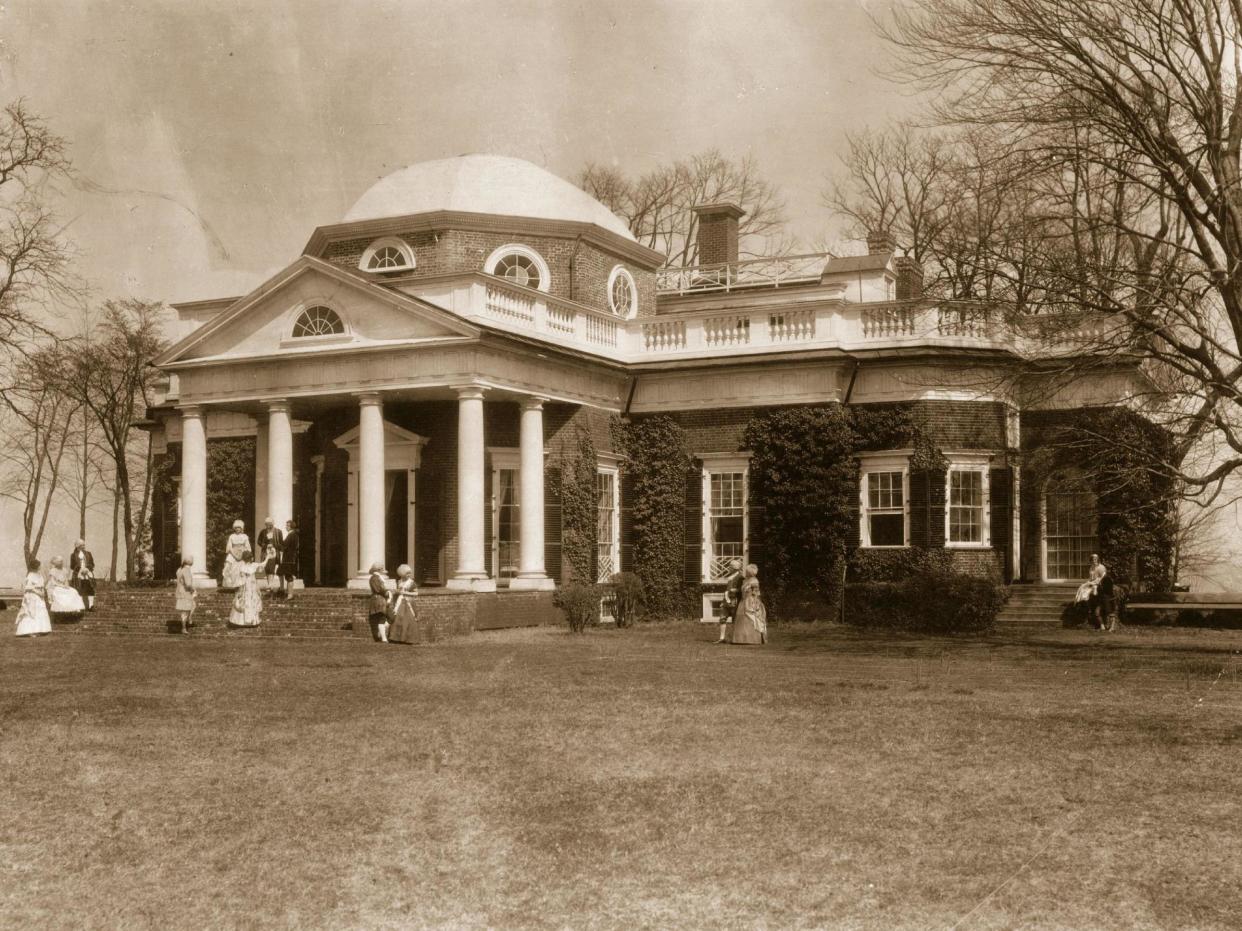
The two young, white University of Virginia students had a secret.
It was September 1826, and the men, both scions of wealthy southern slaveholding families, were suffering from the same sexually transmitted disease.
Conferring, they identified a possible culprit – an enslaved black woman whom both had raped. They also thought of a solution.
Joined by several classmates, Turner Dixon and George Hoffman attacked the woman, “[accused] her of giving them a venereal disease ... stripped her naked and beat her” bloody, as University of Virginia professor Alan Taylor recounts in his new book, Thomas Jefferson’s Education.
Her name is lost, but her age is known. She was 16.
When the woman’s owner – a local tavern keeper – complained to faculty members at the university, professors verbally reprimanded the two ringleaders and wrote letters to their parents.
Because Dixon and Hoffman “appeared sorry” and voluntarily paid the tavern keeper $10, professors declared the punishment sufficient, according to Mr Taylor.
Records show a student who mishandled a library book earned harsher discipline, Mr Taylor wrote.
Video: Georgetown Students Push University For Action on Slavery Reparations
While shocking today, the incident was unremarkable for its time and place, Mr Taylor said in an interview.
Throughout the first half of the 19th century, male students studying at southern universities regularly mistreated, beat and raped the enslaved men, women and children who catered to their everyday needs, Mr Taylor said.
The brutal behaviour was ignored or accepted by professors, administrators and local authorities.
“These men are 16 or 17 years old, they’ve been raised on plantations and been trained from youth that it is their job to command people and abuse them if there is any resistance to their command,” Mr Taylor said.
“For a student to lash out and hit an enslaved person, that was routine in this world.”
Little, if any, previous scholarship has explored the horrific abuse endured by enslaved people working at southern colleges in the lead-up to the US Civil War, according to Maurie McInnis, a professor at the University of Texas.
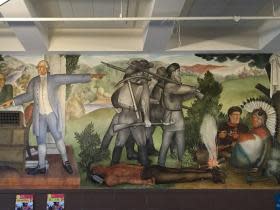
Read more
It’s now coming to light courtesy of two books – Mr Taylor’s and another called Educated in Tyranny: Slavery at Thomas Jefferson’s University, which Ms McInnis co-edited with Louis P Nelson – that tackle the subject at the University of Virginia, Thomas Jefferson’s pride and joy.
Both books draw on years of painstaking scrutiny of archival records, which the University of Virginia made available as part of its ongoing attempt to grapple with its slaveholding past.
Last year, the university produced a 96-page report that concluded slavery was “in every way imaginable ... central to the project of designing, funding, building, and maintaining the school”.
It also vowed to erect a monument honouring the enslaved labourers who built its campus.
The university’s efforts come as dozens of universities across the country undertake similar examinations – and as America marks the 400th anniversary of the arrival of the first enslaved Africans in Jamestown.
The dark milestone has spurred a reckoning with the awful reality of slavery and the myriad ways it shaped the nation.
The two authors said they hoped to surface the invisible history and day-to-day agony of the enslaved people who for decades serviced America’s prestigious institutions of higher education.
Ms McInnis said the University of Arizona, established at the start of the 19th century by the slave-owning Founding Father who penned the Declaration of Independence, afforded a perfect case study.
“The central paradox at the heart of [this university] is also the central paradox of the nation, the unresolved paradox of American liberty,” Ms McInnis said.
“How is it that the nation that defined the natural rights of humankind did so within a system that denied those same rights to millions of people?”
She paused. “What does it mean, to have a university founded by the man who said all men are created equal – and to have that same university built and maintained through the stolen liberty of others?”
Thomas Jefferson established the University of Virginia in 1819 with a clear mission – to create more Thomas Jeffersons.
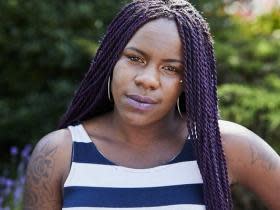
Read more
Mr Jefferson – who by then had served as both US president and vice president – envisioned the university as a breeding ground for the next generation of the country’s political elite, beneficiaries of his educational program moulded in his image, Mr Taylor said.
Still, he wanted students to differentiate themselves in at least one important way. He wanted them to end slavery in America.
In his late seventies at the time, the former president said he was “too old” to take any action himself, a claim he first advanced in his forties, according to Mr Taylor.
Instead, Mr Jefferson insisted, the up-and-coming generation should fix the problem by “emancipating the enslaved and deporting them to Africa”, Mr Taylor said.
“He wanted to whiten Virginia,” Mr Taylor said. “He believed the University of Virginia would help to achieve that.”
Instead, early graduates became “leading voices in the pro-slavery movement, soldiers in the Confederate Army, and political leaders in the Confederate States of America,” Ms McInnis wrote in Educated in Tyranny.
The vast majority of the student body – numbering between 100 and 150 people each year – hailed from wealthy, southern slaveholding families.
Plantation-owning parents clamoured to send their sons to the University of Virginia, lauded as a prestigious alternative to the northern schools they feared as dangerous hotbeds of anti-slavery sentiment, according to Mr Taylor.
Ultra-rich southerners were also some of the only Americans able to afford tuition at the university, then “the most expensive college” in the country, Mr Taylor said.
The design of its grounds and buildings – featuring “incredible segregation of student-faculty-white space and enslaved-African-American-work space” – ultimately reinforced vile theories of white supremacy employed to justify slavery, Ms McInnis said in an interview.
“Jefferson physically designed a campus that internalised everything he had learned living on plantations,” Ms McInnis said. “It is architecturally set up to be a landscape of slavery.”
The University of Virginia had one real rule about enslaved people – students were not allowed to bring any to campus.
In part, professors feared the student body would compete to see who could arrive with the most enslaved servants, straining the school’s resources, Mr Taylor said.
Besides, the university already had a significant labour force – usually between 100 and 200 enslaved servants, about half of them women, according to Ms McInnis.
The enslaved helped build almost every inch of the university, from its deep brick cellars to its soaring white columns.
Once students arrived, the university’s enslaved cooked their meals, cleaned their rooms, washed their clothes, tended fires in dormitories, planted and cared for the school gardens, and maintained classrooms and outhouses, Mr Taylor said.
Enslaved people also catered to students’ daily whims.
“Every afternoon, an enslaved servant called on his assigned student,” Mr Taylor wrote in Thomas Jefferson’s Education. The enslaved person then “[took] orders for errands on the grounds or in town”.
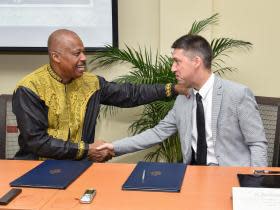
Read more
They also had to obey the sometimes conflicting dictates of every student or professor they passed on campus, Ms McInnis said.
This meant having “not one master but hundreds ... making navigating daily life fraught with peril,” she wrote in Educated in Tyranny.
Through it all, the enslaved faced unchecked abuse from the privileged pupils they served.
Sometimes “bored students” played “cruel pranks” – tricks such as “setting buckets of cold water atop a door to douse a servant entering to clean”, Mr Taylor wrote.
Other times, students nearly beat the enslaved to death, including one who looked “uppity” while serving food, Mr Taylor said, and another who was slightly too slow to clear away faeces left behind by a student’s dog.
School records reveal students punching, kicking and mutilating enslaved people with canes.
Some, frustrated with the pace of service in campus dining halls, threw knives at their enslaved waiters, according to Ms McInnis.
Once, a student convinced that an enslaved girl had spoken to him “with insolence” beat and kicked the 10-year-old until “she passed out and a physician had to be called,” Ms McInnis said.
At the University of Virginia – as at every southern university in America during this era – bullying the enslaved formed “part of daily existence,” Ms McInnis said.
It was also performance art, Mr Taylor added, a way for rich young men to prove their mettle to their peers.
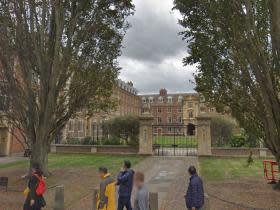
Read more
“The episodes we do know of, other students are watching and applauding,” Mr Taylor said. “This was a whole generation of men who just behaved monstrously.”
Enslaved women, as Ms McInnis wrote in her book, were at special risk.
Rapes were routine, whether conducted in nearby houses of prostitution staffed by enslaved women or in the dark alleyways and shady corners of campus.
Students, who arrived in Charlottesville steeped in a plantation culture of sexual tyranny, felt the “enslaved women working at the university were just one of the ‘Virginian Luxuries’ they had a right to,” Ms McInnis wrote.
It can be difficult to track sexual assaults in the archives, Ms McInnis said, because squeamish faculty often used euphemisms.
Still, the few cases available are haunting, she said – like the time three students seized a “small negro girl ... about 12 years old”, per university records, dragged her to an out-of-the-way cemetery and raped her.
Most of the time, professors “did nothing” or referred the matter to local authorities, who also did nothing, according to Ms McInnis.
Occasionally, faculty members might deliver “verbal admonishments”, she wrote. Meanwhile, professors commonly dismissed students for failing to wear the prescribed school uniform.
No calls for discipline came from the school’s founder, either.
It’s probable that Jefferson knew about students’ brutalisation of the enslaved, according to Mr Taylor.
As a slave owner himself, Jefferson knew that slavery everywhere – including at his cherished college – led to violence against the enslaved, Mr Taylor said.
“But there’s nothing in the record from him,” Mr Taylor said. “Frankly, Jefferson does not want to see or think about it ... you know, ‘See no evil, hear no evil, speak no evil’.”
Mr Taylor said he knows many Americans will find the revelations about student behaviour horrifying. But books like his and Ms McInnis’ are necessary at this political and cultural moment, he said.
“There’s a broad understanding that ‘slavery is bad, people got whipped,’ but there’s also an urge to compartmentalise it: ‘That was bad, but it’s over with, and we should focus on the good stuff like U-Va.’s cutting-edge education and science’,” he said.
“We’re not trying to ruin people’s day – but if you want to understand society, you’ve got to understand how everything is woven together, the good with the bad.”
Washington Post
Read more
Read more Murals of George Washington depicting slavery to be covered up


